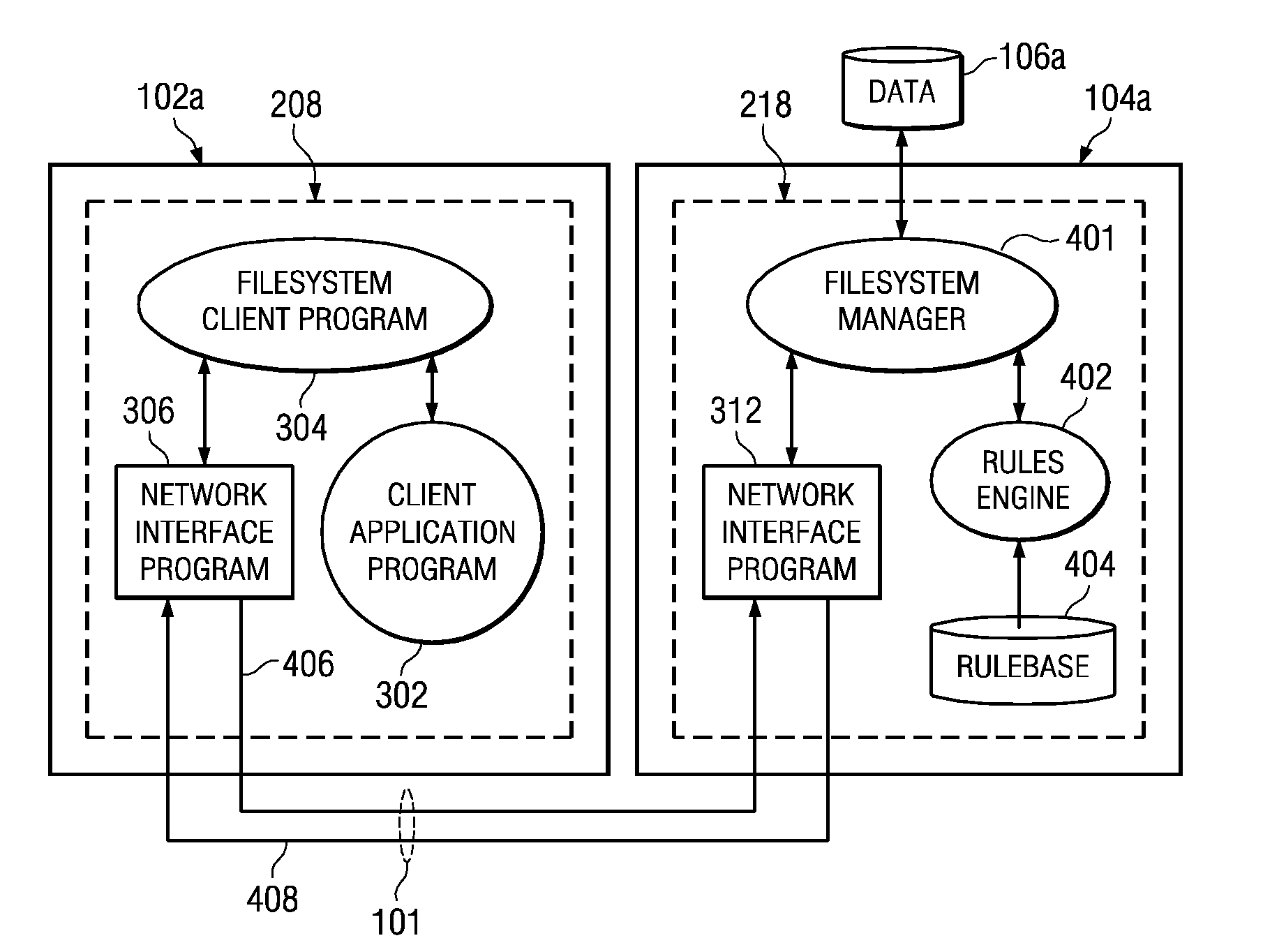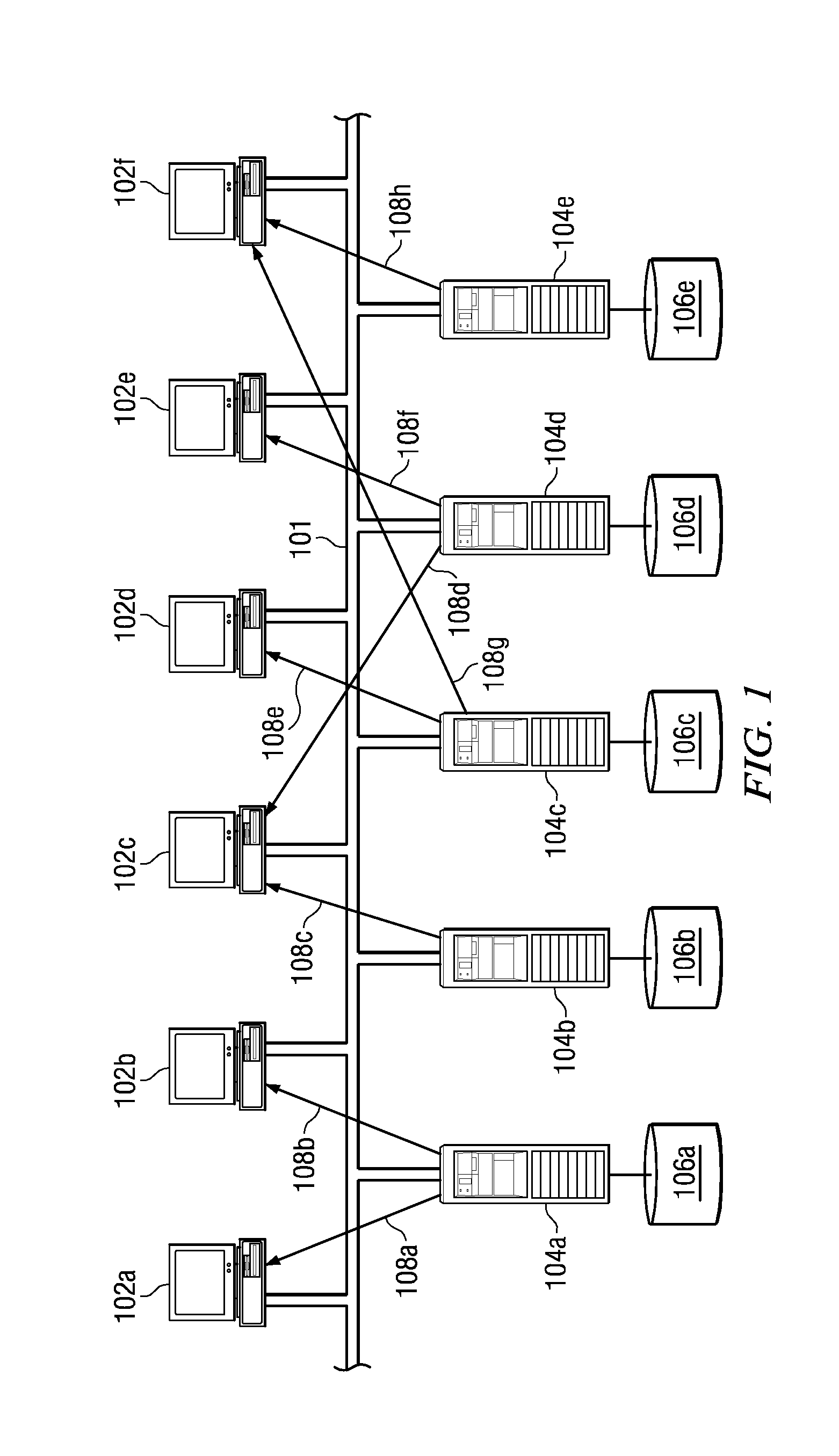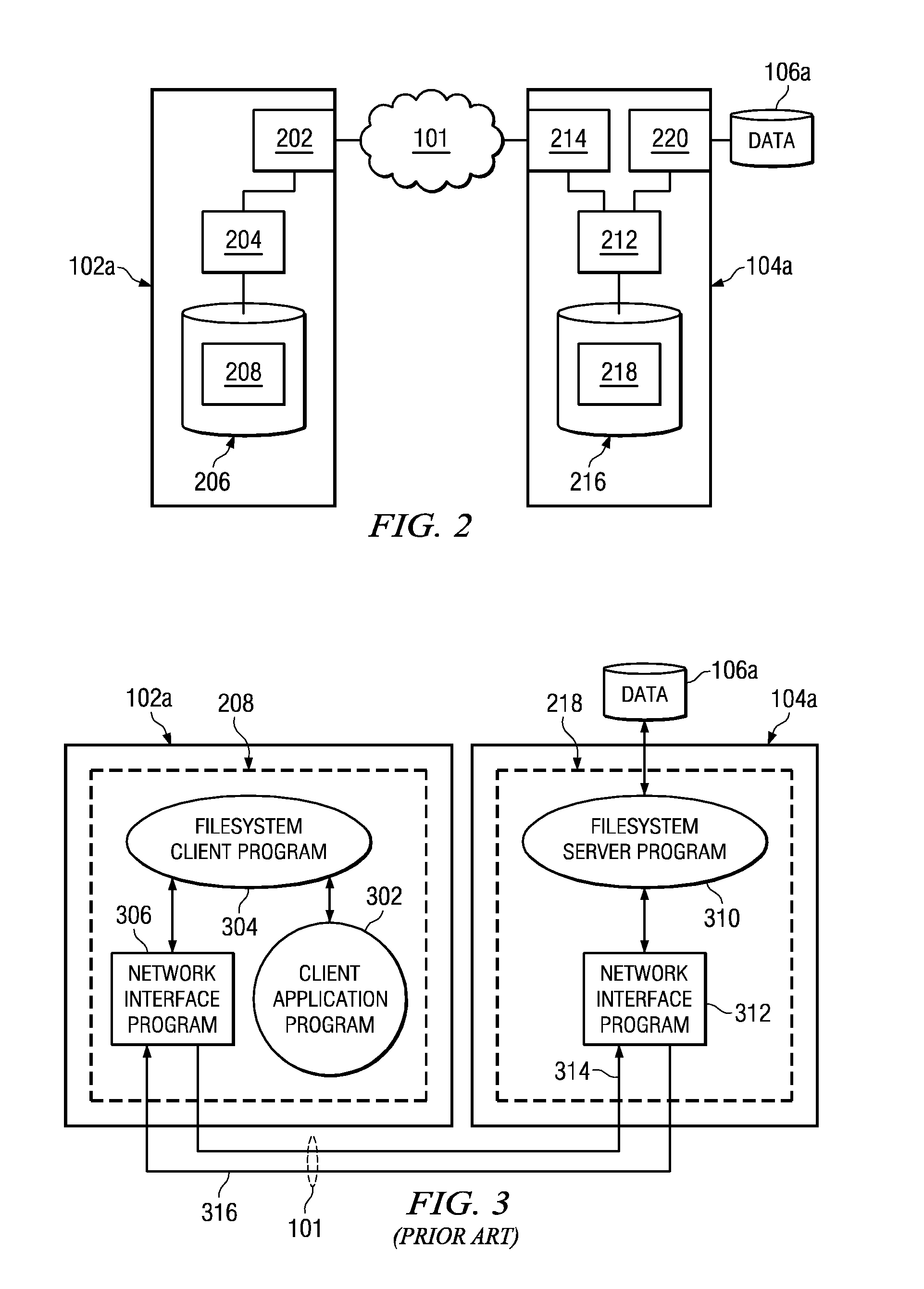Method and apparatus for harvesting file system metadata
a file system and metadata technology, applied in the field of data storage resource management, can solve the problem of large volume of data, and achieve the effect of higher semantic level of policy managemen
- Summary
- Abstract
- Description
- Claims
- Application Information
AI Technical Summary
Benefits of technology
Problems solved by technology
Method used
Image
Examples
Embodiment Construction
[0081]Embodiments disclosed herein can comprise systems and methods for managing file systems and can provide a programmable file system with active rules and policies, an n-tier network file system, a stack organized file system, a union file system with write-through semantics, a file system middleware with selective delegation, a file system with a statistical warehouse and / or other management functionality.
[0082]FIG. 1 is a diagrammatic representation of a two-tier network in which file system management can be implemented according to embodiments disclosed herein. A data network 101 (e.g., a LAN, a WAN, the internet, a wireless network or other network known in the art) connects a number of clients 102a-102f to a number of servers 104a-104e. The servers 104a-104 are each connected to one or more storage media devices 106a-106e (e.g., hard drives, tape drives, disk drives or other storage media device known in the art). Each storage media device can have its own file system and ...
PUM
 Login to View More
Login to View More Abstract
Description
Claims
Application Information
 Login to View More
Login to View More - R&D
- Intellectual Property
- Life Sciences
- Materials
- Tech Scout
- Unparalleled Data Quality
- Higher Quality Content
- 60% Fewer Hallucinations
Browse by: Latest US Patents, China's latest patents, Technical Efficacy Thesaurus, Application Domain, Technology Topic, Popular Technical Reports.
© 2025 PatSnap. All rights reserved.Legal|Privacy policy|Modern Slavery Act Transparency Statement|Sitemap|About US| Contact US: help@patsnap.com



